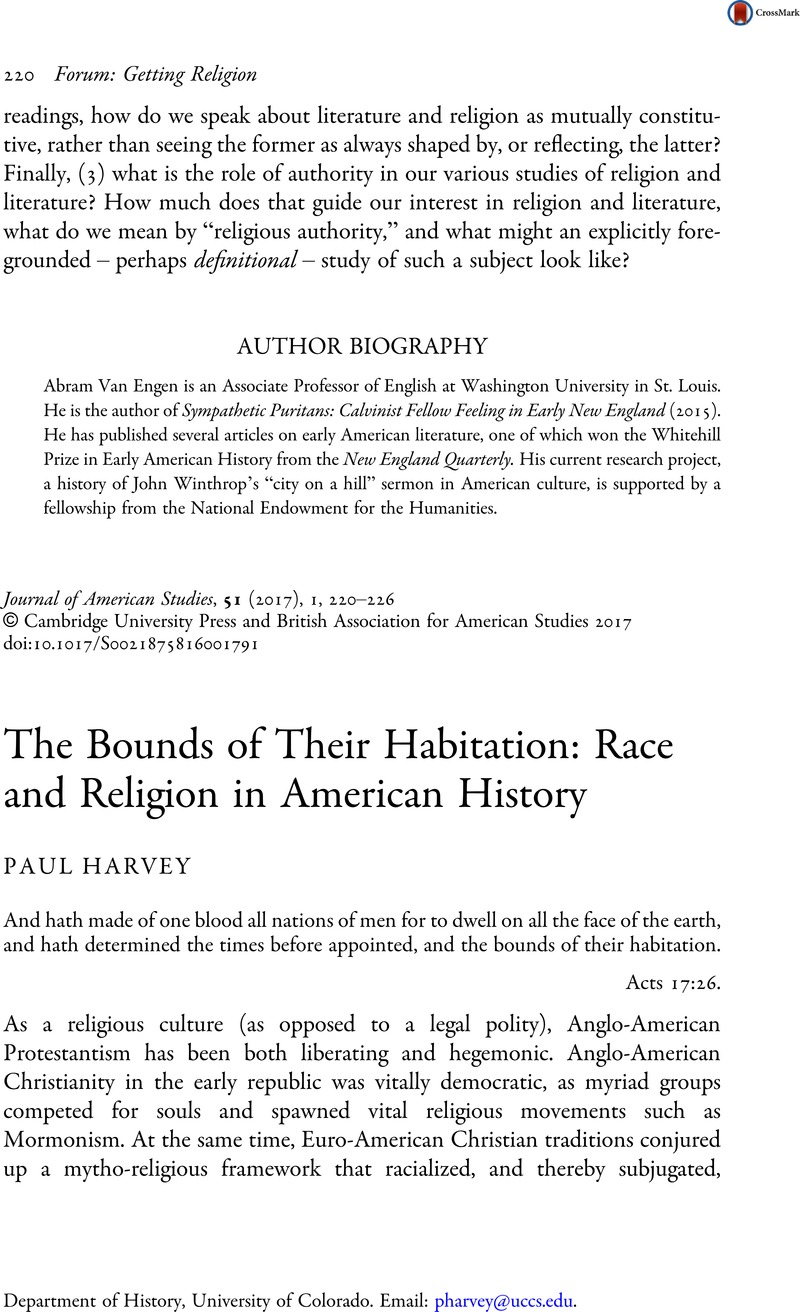Published online by Cambridge University Press: 24 January 2017

1 For more on this see Haynes, Stephen, Noah's Cure: The Biblical Justification for American Slavery (New York: Oxford University Press, 2002)CrossRefGoogle Scholar.
2 Winthrop Jordan pioneered this analysis here in his older classic White over Black: American Racial Attitudes towards the Negro, 1550–1812 (Chapel Hill: University of North Carolina Press, 1968)Google Scholar.
3 See Raboteau, Albert, Slave Religion: The Invisible Institution in the Antebellum South (New York: Oxford, 1978)Google Scholar, for a profound exploration of this point.
4 See Glaude, Eddie, Exodus! Religion, Race, and Nation in Early Nineteenth-Century America (Chicago: The University of Chicago Press, 2000)Google Scholar.
5 These points are developed further in Harvey, Paul, Freedom's Coming: Religious Cultures and the Shaping of the South from the Civil War through the Civil Rights Movement (Chapel Hill: University of North Carolina Press, 2005)Google Scholar.
6 A good summary of much of it can be found in Harris, Frederick, Something Within: Religion in African-American Political Activism (New York: Oxford University Press, 1999)Google Scholar.
7 The pioneering analysis here is Deloria, Vine, God Is Red, repr. (Minneapolis, MN: Fulcrum Books, 2003; first published 1973)Google Scholar.
8 All of these stories are explored in various essays collected in McAlister, Elizabeth and Goldschmidt, Henry, eds., Race, Nation, and Religion in the Americas (New York: Oxford University Press, 2004)Google Scholar; and Prentiss, Craig, ed., Religion and the Creation of Race and Ethnicity: An Introduction (New York: New York University Press, 2003)Google Scholar.
9 Two recent explorations of this are Wenger, Tisa, We Have a Religion: The 1920s Pueblo Indian Dance Controversy and American Religious Freedom (Chapel Hill: University of North Carolina Press, 2009)Google Scholar; and Kruse, Kevin, One Nation under God: How Corporate America Invented Christian America (New York: Basic Books, 2015)Google Scholar. A more legal history and philosophical approach is taken in Sullivan, Winnifred Fallers, The Impossibility of Religious Freedom (Princeton, NJ: Princeton University Press, 2007)Google Scholar.
10 See Emerson, Michael and Smith, Christian, Divided by Faith: Evangelical Religion and the Problem of Race in America (New York: Oxford University Press, 2001)Google Scholar; and the essays responding to this work in Hawkins, J. Russell and Sinitiere, Phillip Luke, Christians and the Color Line: Race and Religion after Divided by Faith (New York: Oxford University Press, 2013)Google Scholar.